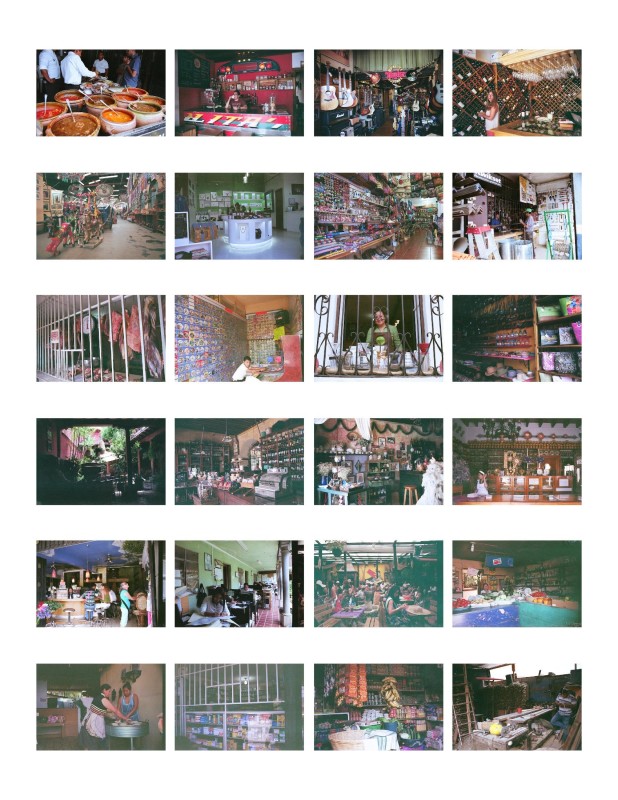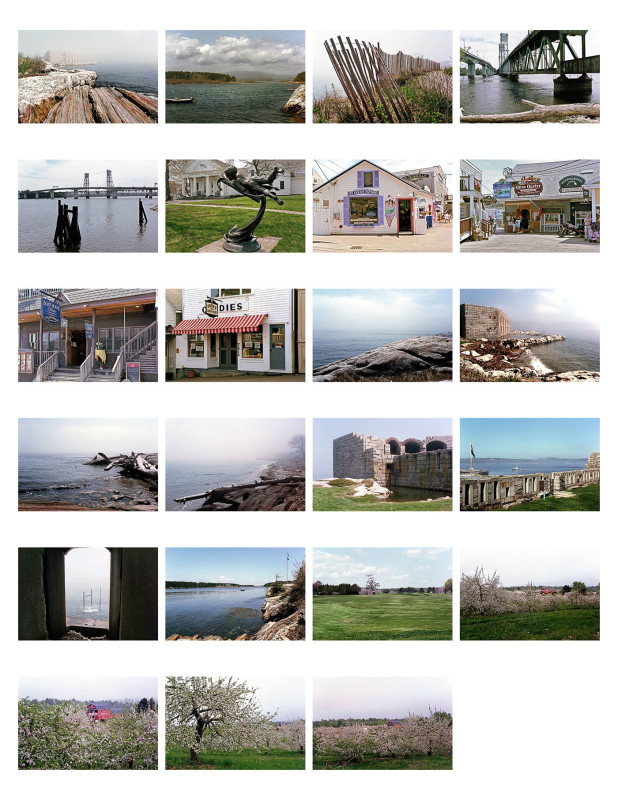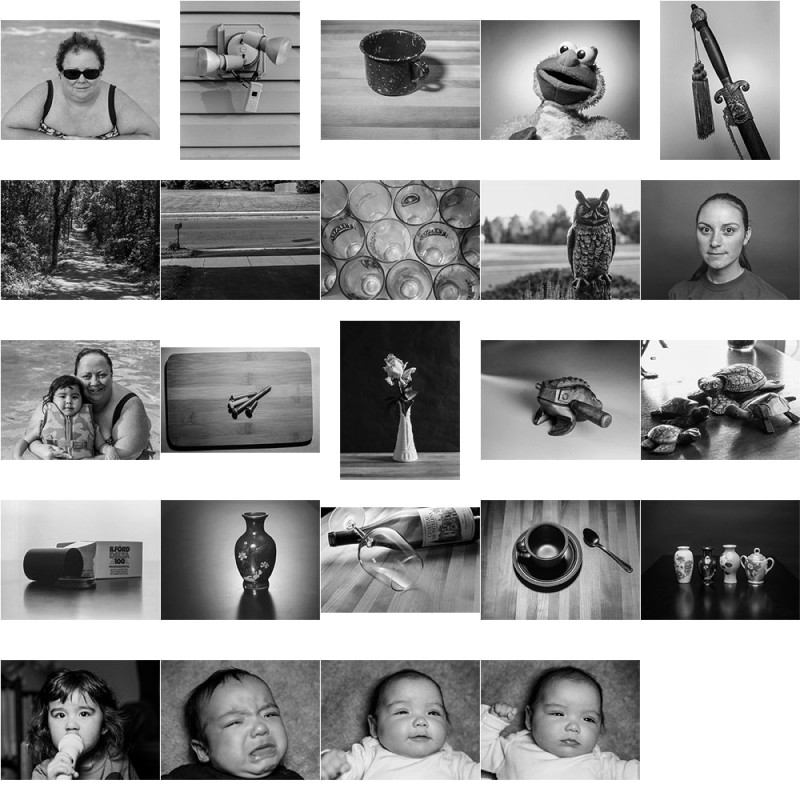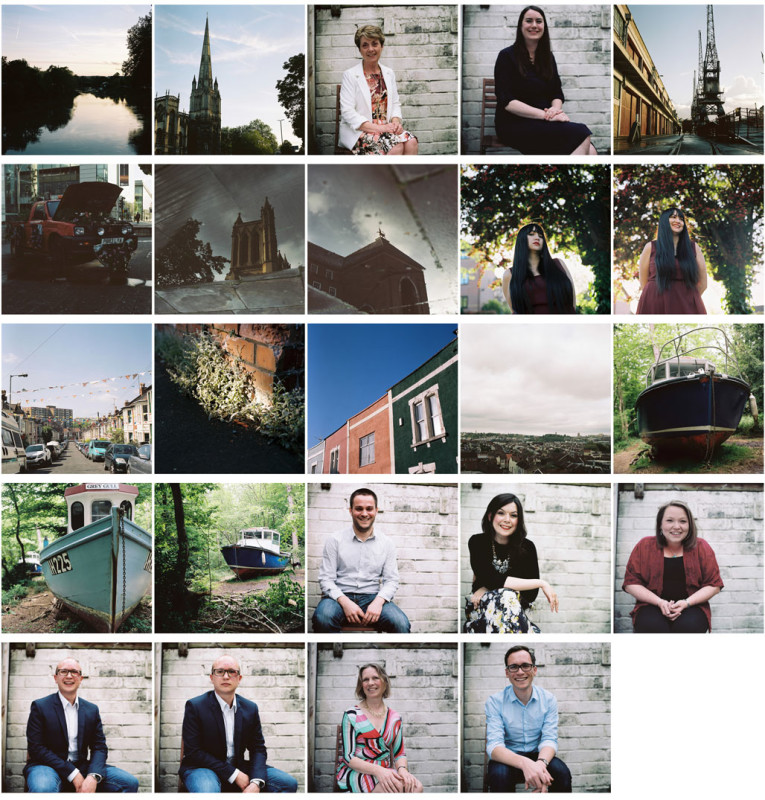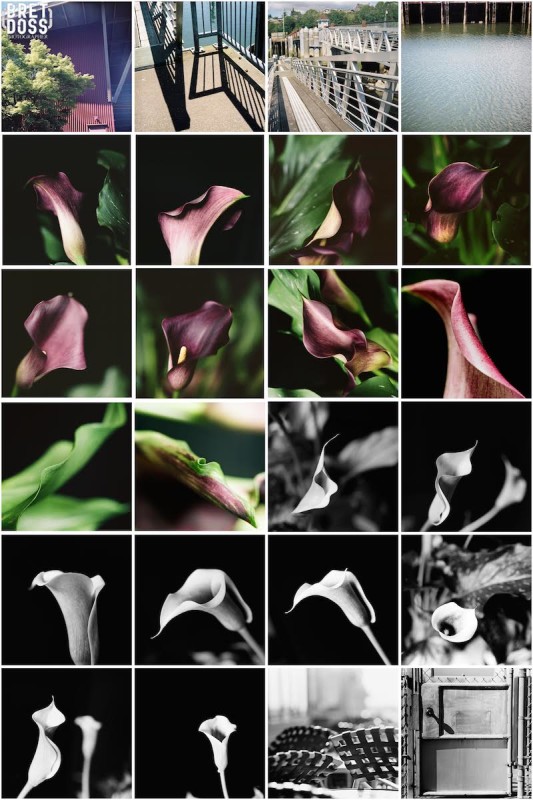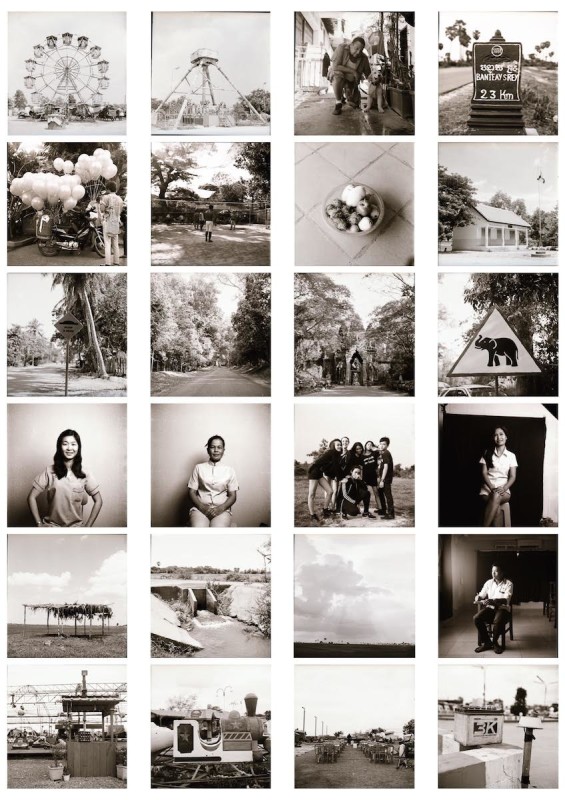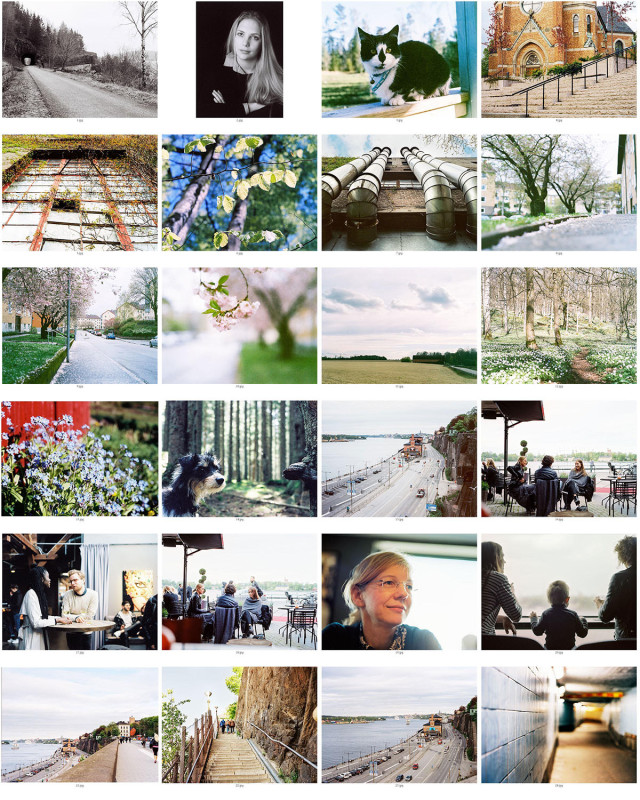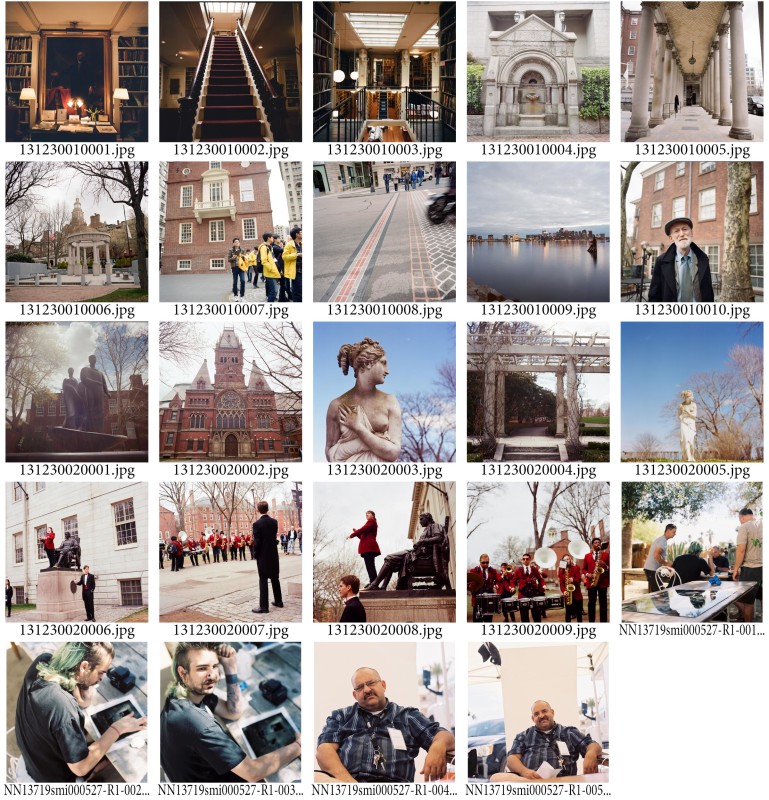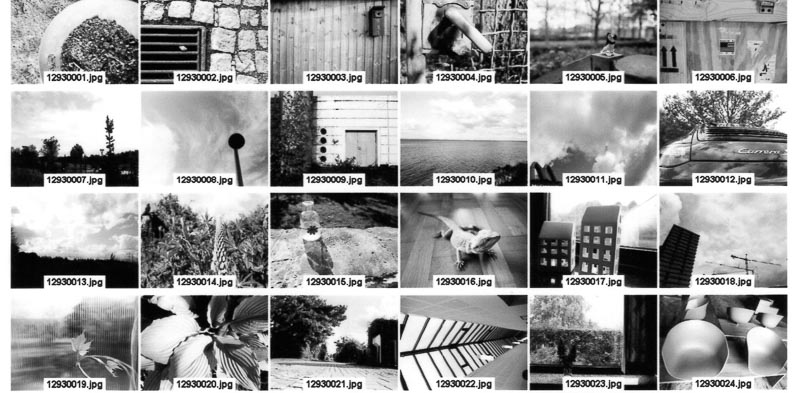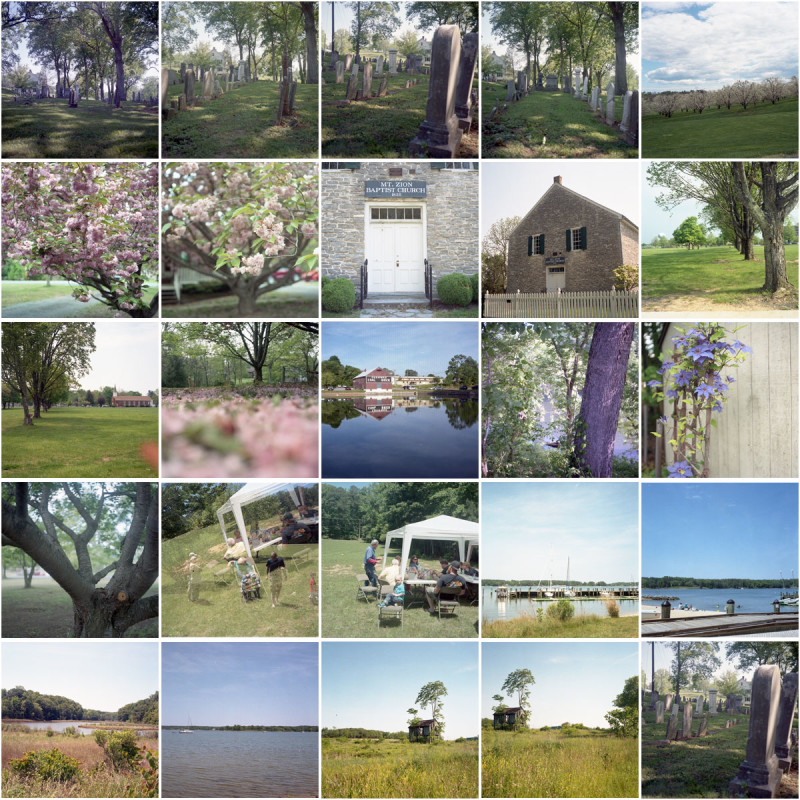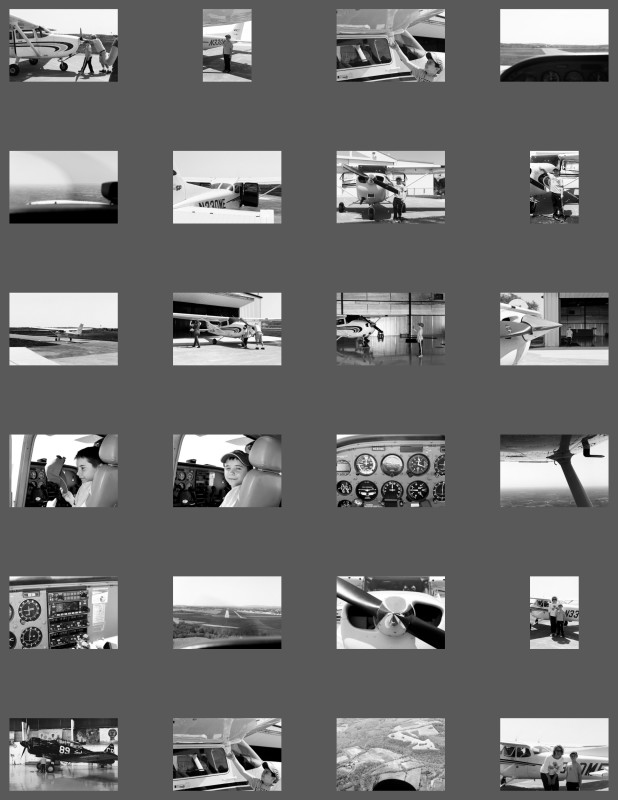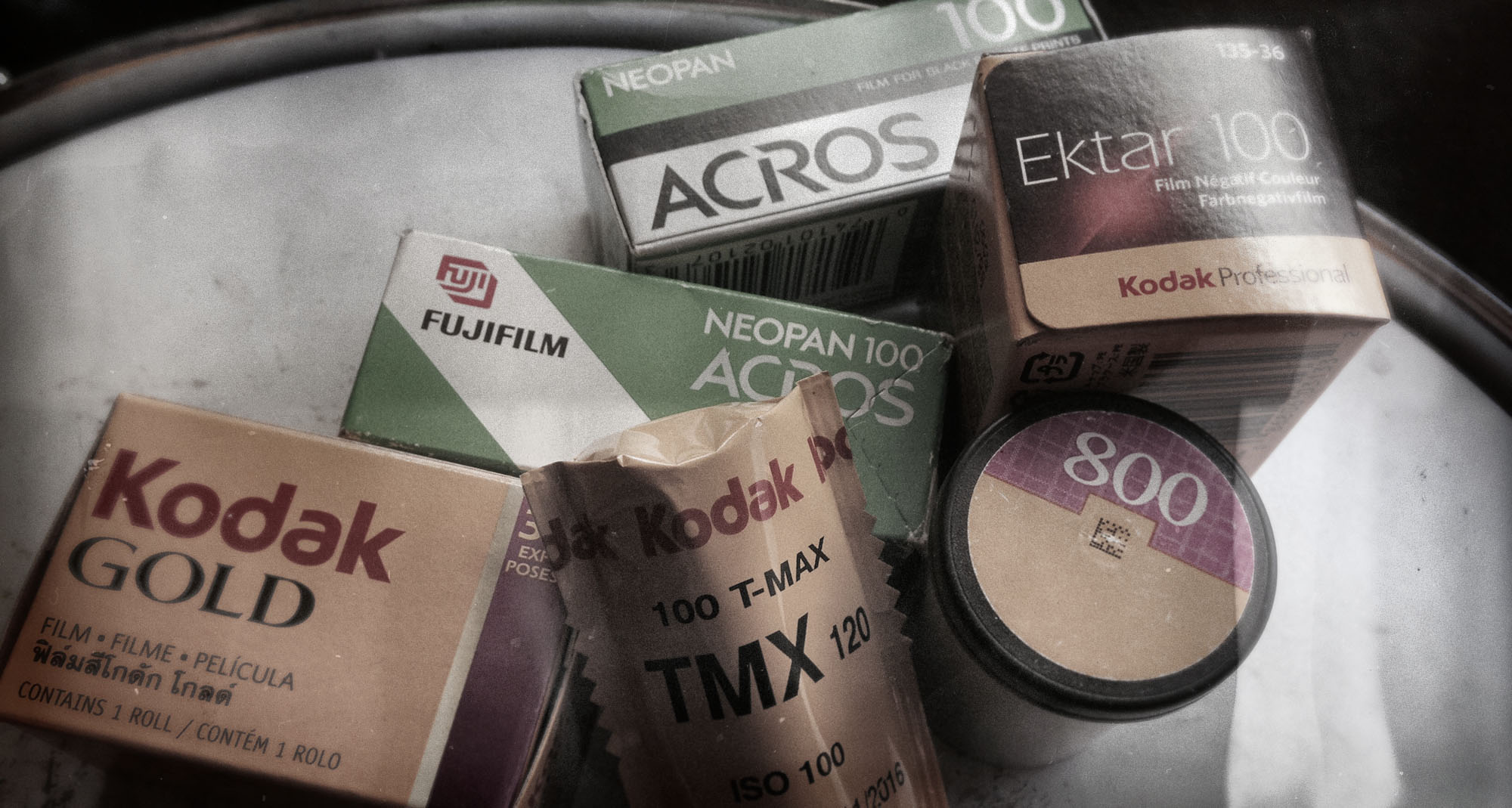
We had an assignment on Lighting Essentials that was fairly easy to be involved with… sort of. The assignment was to load one roll of 24 exposure film into the camera of your choice and shoot each shot as though it were the ONLY shot you had. No ‘bangin’ off a motor drive, more like treating each frame as a singular image with the importance of a view camera.
Below are the amazing shots the photographers did in contact sheet form. Damn I miss contact sheets.
First up, Rudy Giron, Guatamala.
Rudy Giron's Comments on his 24 Frames
Rudy Giron
• Canon EOS Rebel XS [EOS 500] from 1993 with 28mm 2.8 lens
• Lens: 50mm F1.4 AIS, 105mm F1.8 AIS
• Film: Expired Fujifilm Superia X-tra 400 color film from 2001.
• Scanned at Kodak mini lab, Antigua Guatemala
Rudy Giron Photography
• Antigua Guatemala, Central America
• Tel: +502 4569 4419
• Email: photos@rudygiron.com
• Website: www.rudygiron.com
24 frames of film for May 2015.
I used an expired roll of Fujifilm Superia X-tra 400 color film from 2001 on a Canon EOS Rebel XS [EOS 500] from 1993 with 28mm 2.8 lens. Some frames exposed more or less well, while others were under/over exposed. I don’t know if this is camera error or simply the film was too old. Most frames were shot at f2.8 while others at f5.6 if enough light.
My theme is entitled “Come in” [“Pase adelante” in Spanish] which is what vendors would say as you enter their business. I tried to show all kinds of business as seen from the doorway. About half the roll is from tiny business found in villages around Antigua Guatemala while the rest of the roll was captured on the more affluent shops in downtown Antigua Guatemala.
My cost for this film project was $3.75 for film developing and scanning of the 24 frames at 6 megapixels [8″x10″] plus an index print at my local Kodak mini lab. I had the roll of film and I provided an SD card to the lab so I didn’t have to pay for a disc. The turn around for developing and scanning the 24 frames was 1 hour. They still sell a roll a 24-frame of film at this Kodak lab for $5.
Next, I will get some black and white C41 film as this is the easiest and least expensive way to have black and white film developed, scanned and printed in Antigua Guatemala. I have a few more themes in mind, for instance, portraits of the vendors inside the local market.
Alfred Kypta has a write-up on his blog about the 24 Frames in May assignment.
Steve Gray's description for his 24 Frames submission.
As with last year, I used my trusty Minolta X-370, using a 50mm f/1.7 lens. This time I opted for Ilford Delta 100 black and white film. Apparently the light streaking I saw last year was indeed caused by the old film, and not by the camera. Yay!
I sent the film off to The Darkroom (www.thedarkroom.com), which did an okay job. I did see a little bit of oddness in one or two frames (probably from handling the wet film). I corrected what I could with Photoshop, and I tweaked the cropping and contrast a little…so these are not genuinely straight out of the camera shots. Still, I’m okay with what I got. I bought a second roll of the same film, and now I need to plan an activity to shoot with it. If I keep this up, I’m going to have to splurge on a developing tank, chemicals, and a scanner. Heh.
The images can be viewed individually on my website @ http://photos.gray-imagery.com/p171174507
My base website is www.gray-imagery.com.
From Catherine Vibert:
Hi Don, here is the contact sheet, and the link is here: http://catherinevibert.
Melissa Hanson‘s entry.
Melissa Hanson, Utah Pentax K1000, 35mm Sigma 28-70 zoom f:2.8 Sears 70-210 macro-zoom f:4 Kodak High Definition ISO 400 Lab: Atelier A.F.A. http://atelierafa.com/index.html Flickr album: https://flic.kr/s/aHsk9U6KyW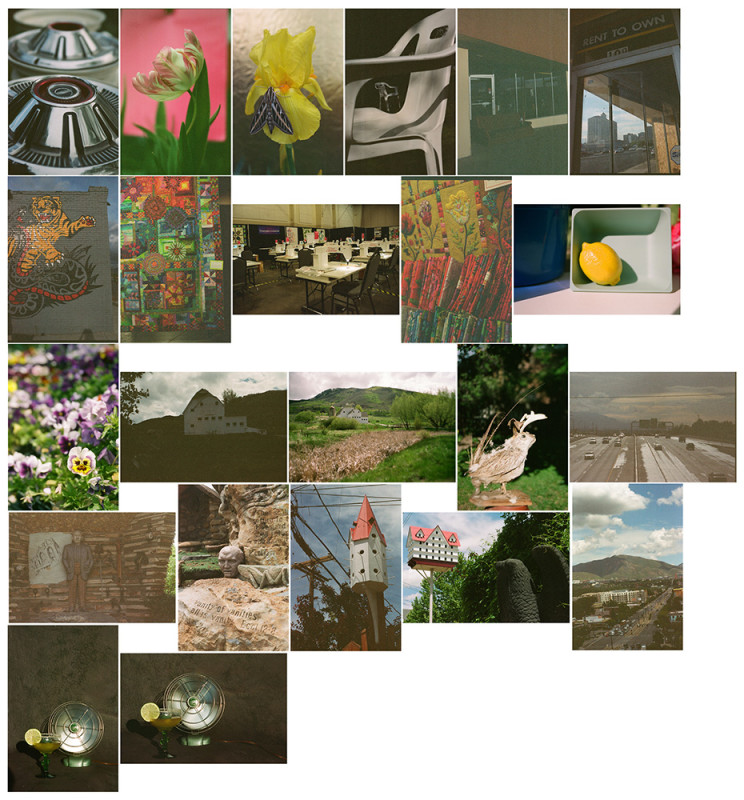
Chris Dean's Info
Camera: Hasselblad 500 C/M with 80mm Zeiss 2.8 Lens
Film: Kodak Portra 160
Developed and scanned by a local lab (www.photorgaphique.co.uk)
No cropping or editing
Chris Dean: www.chrisdeanphoto.co.uk
Email: chris@chrisdeanphoto.co.uk
Twitter: @chrisdeanphoto
Instagram: @chrisdeanphoto
Full size pictures available at: chrisdeanphoto.co.uk/blog/2015/6/8/24-frames-in-may-2015
Last year’s 24 Frames in May was my first (serious) attempt at shooting film. This year I thought I’d make things even more interesting (difficult) for myself by getting to grips with a medium format camera. There’s a lot to learn!
It has a 6cm x 6cm negative, so everything is short in square format (a 1:1 format rather than the 3:2 of my DSLR).
It has a waist level viewfinder which means you look down into the camera, and left-right is reversed, which is a little confusing!
There’s no built-in light meter so you have to take light readings separately (or rely on the sunny 16 rule).
The negatives are a lot bigger than the 36mm x 24mm of a “standard” (35mm) film camera, which means the depth of field is very shallow, and you need a very steady hand (or a tripod) to avoid blurry shots. Focusing is critical and hard!
Unlike a digital camera where you can take hundreds of shots, you’re limited to 12 shots per roll of film. So you need to make sure you’ve got that shot, especially when you’re trying to treat each frame like gold dust.
May was especially hectic this year, so I didn’t ending up spacing out my shots to the extent that I would have liked, and the medium format camera slowed me down even more than the film 35mm did. So I rounded off the roll by taking a portrait of everybody attending a fancy birthday dinner I was having.
I had great fun. I’m looking forward to shooting more film, and have booked myself into a black and white darkroom developing course – can’t wait!
Bret's Info
Participating in Don Giannatti’s Project 52 has a lot of fringe benefits in addition to the exceptional training; for example, a challenge to get out a film camera and shoot 24 Frames In May. I was happy to be able to participate this year, and also to find a clean Pentacon Six medium format camera (and some really clean lenses) on eBay.
The official challenge is to shoot 24 frames, one a day, and with a medium format camera that would mean two twelve-exposure rolls. I had to follow a different path to my 24 Frames. Since the camera was new to me, as were the lenses, I shot some tests as well to make sure everything was working. As I was using some extension tubes for some of the calla lily images, I was estimating the compensation factor, and so did some bracketing. The nature of my life and of the calla lilies I acquired for the project did not permit making only one frame a day. In the end, I exposed six rolls of 120 film over two separate days, and selected 24 from amongst the test &bracketed images, ignoring the failed test images. I used Portra 160 for the color images, and mostly Ilford HP5 (ASA 400) for the black and white (the last two you see are Ilford Pan-F — ASA 50). Lenses were mostly the 80 and 65 mm, though I also shot with a 120, 180, and 300 as well.
I went to some of my favorite subject matter: the marina area and some calla lilies in the studio. I used open sky window light for the callas. I think next up will be some portraits with the Pentacon!
The film was sent to The Find Lab, using their Fatboy scanner option. Great service and quality scans.
The only post I did was some slight levels/curves for those images where neither bracket was ‘just right’ and I needed to be somewhere in the middle. I retouched a very few hot pixels that appeared in very few of the scans, and applied a light sharpen to the images.
all images © Bret Doss, All Rights Reserved
Jorge Rodriguez Santos shoots in Cambodia.
Learn more about Virginia Smith‘s film work on her blog.
Reed Waters:
1960 Yashica Mat
Kodak Porta 400 120 film.
These are out of the camera, no post processing.
Developed & Scanned by The FIND Lab
Darla Hueske had a film mishap and only 15 of her shots came out unscathed. A shame because so many of her images are really good.

